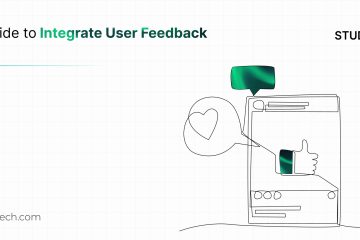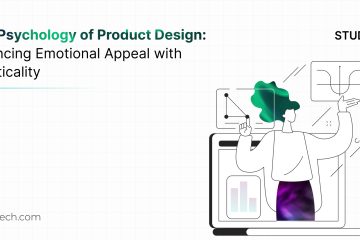The design of a premium-quality user interface ensures that the customer is first and foremost, and the approach used to design the whole consumer package. The customer will believe that the app is good enough to handle it rather than the opposite. The user interface design considerations mentioned below must be taken into account when constructing this experience for the consumer.
What are the principles of design?
Conceivable rules, standards, prejudices, and design criteria are design concepts that artists implement freely. The design concepts are focused on expertise from several fields, like behavioral psychology, economics, engineering, and ergonomics–from their combined expertise.
Design principles are simple consultancy tools for rendering pleasurable projects convenient to use. The designers add them to their work while choosing, constructing, and arranging elements and characteristics. Website design basics embody accumulated knowledge of the project and associated areas by academics and practitioners.
The designers may foresee how users are going to respond to the design when they implement it. “Keep it short and simple” is a representation of a theory that you build with non-experts to eliminate the uncertainty that can be encountered by the customers.
Categories under Design Principles
Designers use simplicity and accessibility to tackle necessary human behavior. To direct the acts, they use certain design principles. In this way, they place the users under seamless control.
- Set rational, the natural order of knowledge.
- It is easy to undo/redo activity by Ensure consumers.
- Hold the expectations clear so that users understand what to do immediately without discovering different toolsets.
- If possible, eliminate errors; alert users before taking acts anywhere you can’t.
- Don’t recall details to users –hold accessible options, etc.
- Make it more or less practical for novices and experts.
- Design with esthetic considerations. Do not embrace unnecessary things.
- Specify error notices in plain language to describe issues and solutions.
- Provide easy-to-search tools for troubleshooting if appropriate.
They are discussed elaborately in the following paragraphs.
Concentrate on real users :
Every business’s primary objective is to please the individual customers. UX architecture is mainly based on real people–their desires, aspirations, motives, and concerns. Knowing these critical customer factors also aids designers in creating users and reflecting on these customers over the whole design cycle. Specific users ‘ desires can be created using traditional user research methods, including interviews, opinion polls, background testing, and shadowing.
Concentrate on the market :
UX architecture of that software must allow market sense for any company to thrive in the sector. It is incredibly important to define the business objectives in advance. A secure UX design provides an excellent compromise between market and customer goals. Enterprise customers will eventually lead to ROI for your company when achieving the market goals.
Statistics-informed design :
Design is excellent not because the designer creates it, but because it is full of various sources of information. Qualitative or quantitative evidence may be required in general. The customers, business and marketing activities, competitiveness, consumer motivation, and web analytics are representations of the data source.
Data-informed designs can lead to meeting long-term market and customer targets and will also provide consumers with a beautiful experience that will ultimately help customers to maintain themselves.
Conceptual model design for the customer :
The mental model of the consumer implies a user’s understanding of a given product or service. When you grasp the mental models of customers, you can recreate them for the ideal environment in your template so that users can efficiently complete their roles and reach their goals. Technical analysis is used to identify the mental model of the consumer.
Design for empathy, knowledge, job productivity, and human memory :
An essential aspect in UX design involves the development of quick to understand, production of an unforgettable experience, and quality and productivity of their activities. The awareness of the interface depends on user creation.
Memorability ensures that the consumer will be able to recall how to do something as he or she comes to it because they will not often need the application. If the user has chosen to do a job on a website or in an app, he or she should be prepared to do it competently, also through a lot of user experience.
Design validation :
Design validation requires a comprehensive evaluation and review after design and development. The aim of validating projects is to ensure that the concept is capable of achieving the specified objectives. Project testing leads to more substantial project choices and consistency.
Design flexibility :
The core concept of the UX model is quality. An excellent user interface should be consistent. It allows consumers to quickly get used to the software and reduce the time they know. If a customer notices incoherence, it’s less probable that he can come to your app. The continuity in concept also ensures that company identity and the visual language are retained. Consistency allows companies to create a company’s recovery interest, reputation, and faith.
Technological Handshake :
Technology is continuously evolving, and it changes businesses. Once you have approved prototypes, you need to guarantee the available technology will handle everything men have planned. Only a special handshake will render this possible.
Neutrality :
The standard UX design does not compel people to change their conventional approach to solving the issue significantly. It ensures that no further clarification is needed for the messages and results provided by the application. The wording and language used in this field should also be maintained.
An elegant interface is generated by using standard design terms and pictures. It is a kind of bridge between representations of the actual world and behaviors and artifacts to be exploited by a person. Consumers recall better the response associated with a recognizable entity before they remember the instruction name involved with it.
Comfort :
The user usually figures out how to work by experimenting with a new software app. It should be taken into consideration by an appropriate GUI. It will only permit the proper collection of activities at each point of operation and inform users about circumstances where they can harm the device or results.
People can make some errors, sometimes with an excellently-designed GUI. The errors may be either “real” (random command-or data selection) or rational (faulty judgment to pick an order or data.) The UX design will, therefore, be able to react to possible user mistakes and enable the avoidance of such errors.
Transparency :
Overboard to add needless layers to the GUI is quite straightforward: additional buttons, options, graphics, attachments, windows, etc. The consumer must accomplish all this to the stage. UX design should be directed at effortlessness and power To avoid this. The GUI should be so transparent that the consumer thinks that the point of interest is directly controlled.
Thousands of UX design principles are implemented practically from a minimal to a large degree. Before designing, Concentrate on real users, identify and accomplish business objectives, design data-oriented design, copy with the continually evolving technology.
It is necessary to reduce cognitive burdens and choice-making time for user experience (UX). The designers will help programmers identify ways to improve performance, control understanding, boost attractiveness, educate consumers, and make strategic design choices in projects.
Author Bio :
Freya Jacob is an adept content strategist with expertise in curating meaningful content. In addition, she is also an avid reader who loves to binge a variety of books and informative articles.


